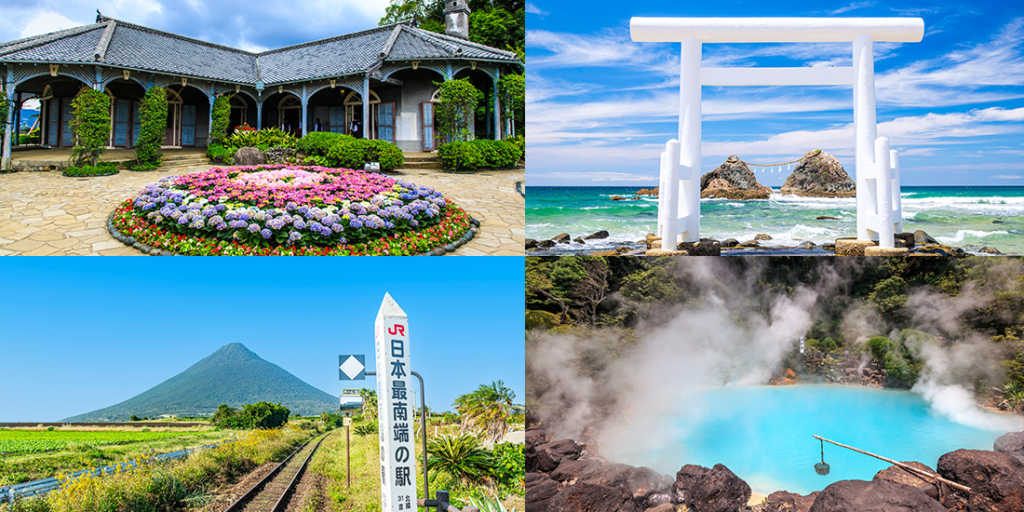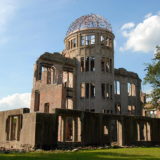Japan boasts a rich history and deep culture. For tourists, experiencing Japan’s traditional culture firsthand can make their trip even more special. Here are some representative tourist spots across Japan where you can immerse yourself in traditional Japanese customs and techniques. At each location, you’ll be able to learn and feel the old ways and craftsmanship.
1. Kyoto (Kyoto Prefecture)

Kyoto is a city where traditional Japanese culture remains strong, exuding an ancient capital’s charm. As Japan’s former capital for over a thousand years, it is home to numerous temples, shrines, and traditional townhouses. Visiting Kyoto offers a deep understanding of Japanese culture and history. It’s an ideal place to experience traditional activities such as tea ceremony, kimono wearing, and Kyoto cuisine.
Experience Spots
Tea Ceremony Experience: Kyoto offers many facilities where you can participate in a tea ceremony. You can learn the proper way to prepare and enjoy matcha (green tea) in a serene tea room, experiencing the spirit of tea ceremony and the essence of Japanese hospitality. These sessions often include learning about the history and rituals of the tea ceremony.
Kimono Rental and Strolling: You can rent traditional kimonos and stroll through historical areas. In places like Gion and Arashiyama, walking around in a kimono is particularly popular. Kimono rental shops provide fittings and hairstyles to match, making it easy to enjoy traditional attire. It offers a chance to blend into the historic scenery, creating wonderful memories with photographs.
Kyoto Cuisine Experience: Kyoto has many restaurants and cooking classes where you can learn about Kyoto cuisine. Using fresh seasonal ingredients, you can cook and savor delicately flavored dishes that highlight the essence of Kyoto cuisine. These cooking classes teach traditional techniques and beautiful presentation, allowing you to taste the dishes you prepare.
Traditional Craft Experience: Kyoto also offers experiences in traditional crafts. For example, you can visit workshops for Kyo-Yuzen (a type of textile dyeing) or Kiyomizu pottery, observing the production process and creating your own handcrafted items. Learning about the background and techniques of traditional crafts while creating your own pieces is a unique joy.
2. Nara (Nara Prefecture)

Nara, Japan’s oldest capital, is rich in historical buildings and cultural assets. Famous for the deer in Nara Park and the Great Buddha at Todai-ji Temple, Nara offers a glimpse into ancient Japanese culture and history. Nara also has many spots where you can experience traditional Japanese culture and its charm.
Experience Spots
Viewing the Great Buddha: At Todai-ji Temple, you can see one of the world’s largest wooden structures and the Great Buddha, which was constructed in the Nara period. The grandeur and historical significance of the Great Buddha are overwhelming, and the exhibitions about its creation provide valuable insights into Japanese religious culture.
Naramachi Strolling: In Naramachi, you can stroll through an area that retains the feel of the Edo period. The area is lined with old merchant houses and traditional townhouses, where you can discover handmade crafts and traditional foods. Engaging with locals and enjoying the historical ambiance offers a deeper understanding of Nara’s traditional lifestyle.
Tea Ceremony Experience: Nara also has facilities offering tea ceremony experiences. Participating in a tea ceremony in a quiet tea room is a perfect opportunity to experience Japanese hospitality. Enjoying matcha and traditional sweets while learning the philosophy and techniques of the tea ceremony can be a soothing experience.
Traditional Craft Experience: In Nara, you can also experience making traditional crafts such as Nara brushes or Nara pickles. Working with local artisans, you can learn traditional techniques and create your own unique items. Understanding the deep-rooted traditions of regional crafts provides a greater appreciation for Japanese craftsmanship.
3. Kanazawa (Ishikawa Prefecture)

Kanazawa is a city that retains its history and culture from the Edo period. Known for its traditional crafts, beautiful gardens, and samurai residences, it’s an attractive place for tourists. Particularly, experiences related to Kaga Yuzen (a type of silk dyeing) and gold leaf crafts are unique to Kanazawa. The city blends history with modernity, offering a distinctive atmosphere.
Experience Spots
Kaga Yuzen Experience: Kaga Yuzen is known for its vivid dyeing techniques. In workshops, you can design your own patterns and learn dyeing techniques. Observing the creation process and choosing your own designs for dyeing helps deepen your understanding of Kaga Yuzen’s tradition. You can take home your own hand-made Yuzen piece.
Gold Leaf Application Experience: Kanazawa is famous for its gold leaf production. You can create crafts using gold leaf, such as decorating small items or accessories. Learning the techniques of applying gold leaf and creating your own special item is a unique experience. You also gain insights into the history and process of gold leaf production.
Strolling in Kenrokuen Garden: Kenrokuen, one of Japan’s three most beautiful gardens, offers stunning scenery throughout the seasons. Especially in spring with cherry blossoms and in autumn with the foliage, the garden is breathtaking. Guided tours provide knowledge about traditional Japanese garden design and maintenance techniques.
Kanazawa 21st Century Museum of Contemporary Art: This museum showcases contemporary art by global artists, blending traditional crafts and modern art. It’s a place where you can enjoy the fusion of Japan’s traditional and contemporary artistic expressions.
4. Tokyo (Tokyo Prefecture)

Tokyo, Japan’s capital, is a city where tradition and modernity coexist. There are areas with longstanding cultural heritage alongside cutting-edge technology and modern architecture. Tokyo offers a range of cultural experiences, allowing you to enjoy both traditional and modern attractions simultaneously.
Experience Spots
Wagashi Making in Asakusa: Asakusa, one of Tokyo’s oldest districts, is home to many attractions such as Senso-ji Temple. In wagashi (traditional sweets) making classes, you can learn traditional techniques and enjoy the sweets you make. Creating beautifully crafted and flavorful wagashi is a delightful skill to acquire.
Sumo Watching and Experience: At Ryogoku Kokugikan, you can watch sumo matches and visit sumo stables to interact with wrestlers and learn basic sumo moves. Learning about sumo’s history and techniques while feeling the sport’s power up close is exhilarating. At the stables, you can also observe training and experience the wrestlers’ lifestyle.
Traditional Performing Arts: At venues like Kabuki-za and the National Theatre, you can watch traditional Japanese performing arts such as kabuki, noh, and kyogen. The dazzling costumes, powerful performances, and mystical stage art provide a profound understanding of Japan’s traditional performing arts.
Downtown Cultural Experience: In areas like Asakusa and Ueno, you can explore traditional Japanese townscapes and shops. Enjoying local foods and handcrafted items while experiencing traditional Japanese life and culture provides a deeper connection to Tokyo’s historical roots.
5. Kyushu Region

The Kyushu region is rich in nature and retains a strong traditional culture. Cities such as Fukuoka, Nagasaki, and Oita offer various cultural experiences. Kyushu’s charm lies in the blend of beautiful nature, hot springs, and historical sites.
Experience Spots
Hakata Gion Yamakasa in Fukuoka: This traditional festival held annually in Fukuoka City has over 700 years of history. During the preparation period, you can observe the decoration of the floats and the festival practice, feeling the excitement and energy. The grand finale with floats parading through the city is a spectacular sight.
Foreign Cultural Experience in Nagasaki: Nagasaki, historically a hub of international exchange, features streets with a blend of foreign influences. Visiting places like Dutch Slope and Glover Garden, you can learn about the history of cultural exchange. Events such as Nagasaki Kunchi and Nagasaki Lantern Festival should not be missed. The Lantern Festival, in particular, lights up the night with beautiful lanterns, creating a magical atmosphere.
Hot Spring Culture in Oita: Oita Prefecture is famous for its hot springs, especially Beppu and Yufuin. While experiencing hot springs, you can learn about their history and benefits. Facilities in Oita offer insights into the properties and etiquette of hot springs. Strolling through hot spring towns and enjoying local cuisine adds to the experience.
Traditional Food Culture in Kumamoto: In Kumamoto, you can experience traditional local cuisine such as Kumamoto ramen and basashi (horse sashimi). Visiting Kumamoto Castle offers insights into its historical background and culture. This is an excellent opportunity to deeply understand Kumamoto’s culinary and historical heritage.
Conclusion
Experiencing Japan’s traditional culture allows you to appreciate its richness and depth. Visiting spots in Kyoto, Nara, Kanazawa, Tokyo, and the Kyushu region offers diverse cultural experiences that bring you closer to Japan’s history and culture. Use this guide to plan a trip that immerses you in Japan’s traditional culture. Each experience will surely become an unforgettable memory.

 Handn blog
Handn blog 
